Every community has at least one dish which its creators say tastes even better tomorrow. A look at grub that gets more robust with time
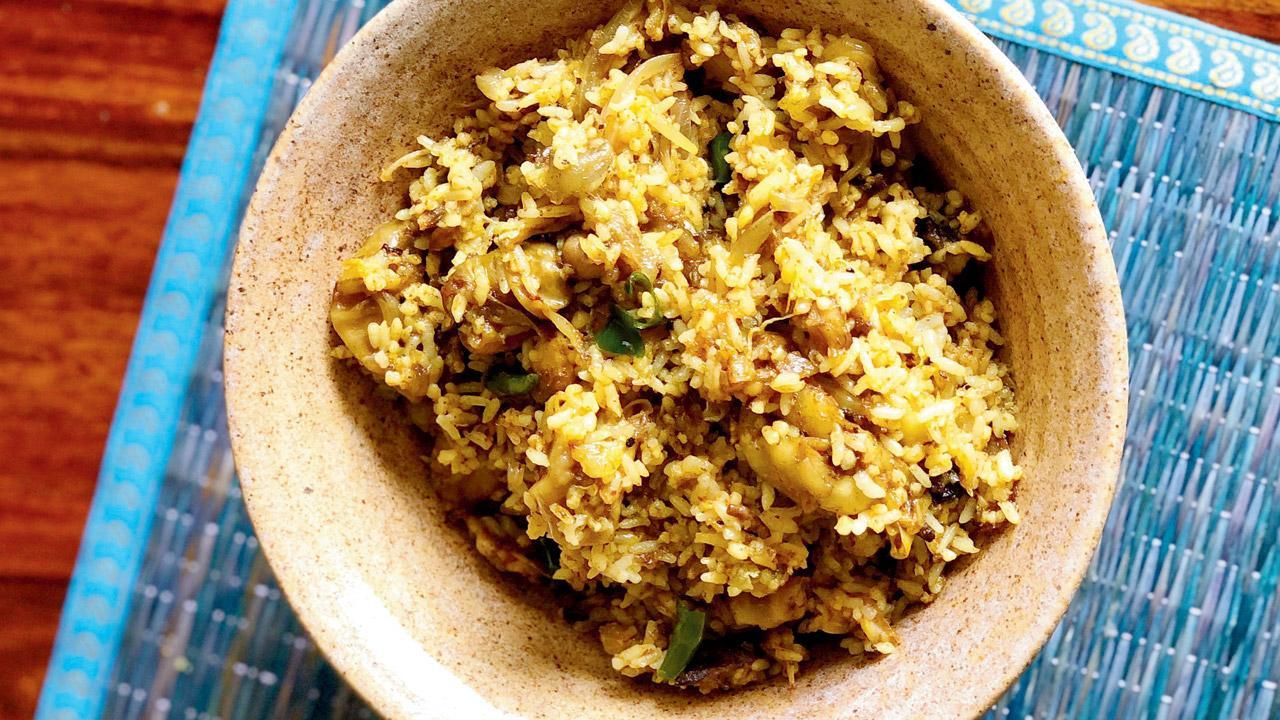
Assamese
Phorum Pandya, Nasrin Modak Siddiqi, Jane Borges and Anju Maskeri
ADVERTISEMENT
One would think that food tastes best when it’s most fresh. However, there are many dishes that actually taste better the next morning or after that. There’s a scientific explanation for foods that develop more fully over time. A report from BBC Science Focus says that when your stew or curry is sitting on the shelf in your fridge, it’s getting more full-bodied by the minute, because the ingredients are marinating and breaking down to create more flavour. Six chefs from different communities pick their favourites.
‘We soak cooked rice to ferment overnight’
What: Poita bhaat, Assamese
By Gitika Saikia, home chef
We all have faced the situation of having leftover rice that doesn’t taste the best the next day. Home chef Gitika Saikia, known for promoting the unknown cuisine of the Northeast, especially Assam where she hails from, makes it a reason to make poita bhaat. “This dish is the more humble version of panta bhaat of Bengali cuisine. Back in our land, it is usually made by farmers who believe in zero wastage and also don’t have the time to cook every day,” Saikia explains. This dish is made in the summer months so eaters can benefit from its cooling effects on the body. “The dish is also great to eat when the digestive system goes for a toss, and one needs a lighter meal option, but not when one has a cold or in the cold season,” she adds.
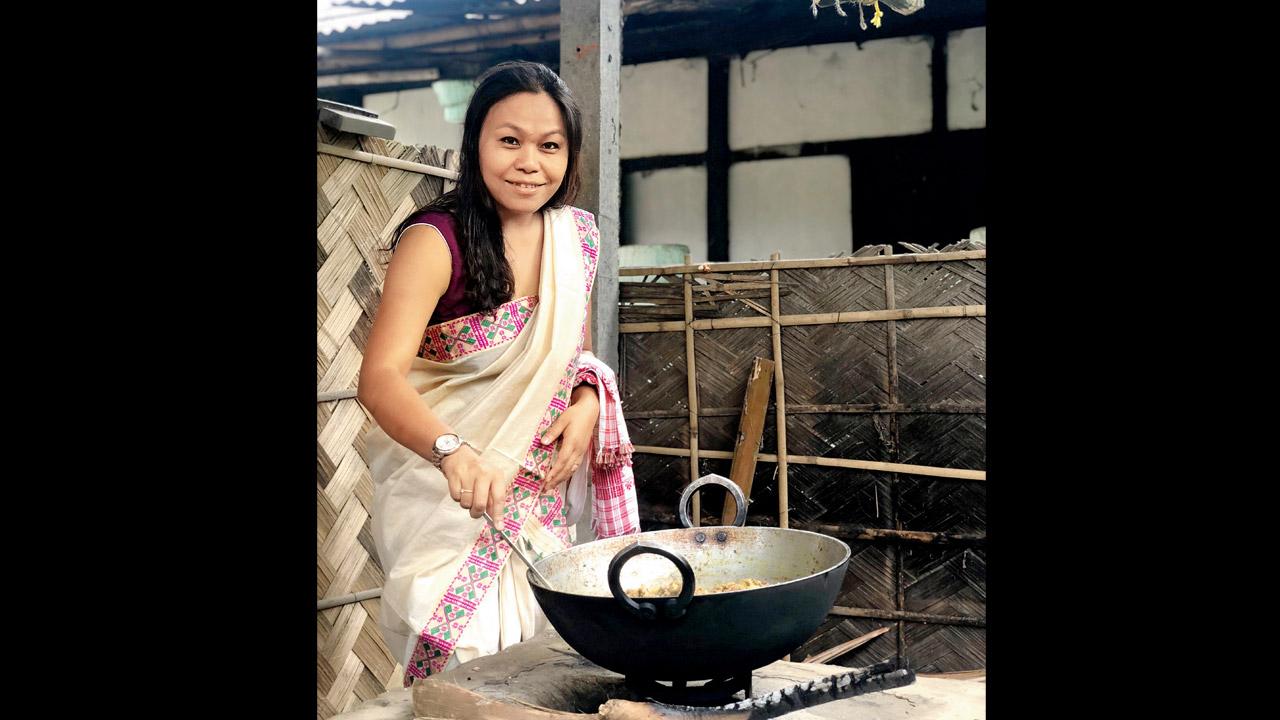
Gitika Saikia, home chef, says poita bhaat works well when the digestive system goes for a toss. Since it’s cooking for the body. avoid it in winter
Cooked rice is soaked overnight, and the foam forming on the top is removed and replaced with fresh water. “This dish is never made with fresh rice. Farmers add salt, mustard oil, fresh onions and lots of green chillies. In the cities, we add mashed potatoes called alu pitika,” says Saikia. Another dish she recommends is the maas or petu bhoja. “This is made with fish [mainly katla or rohu], where we use all the leftover, discarded parts of it, including the gizzards. Little oil is added as the intestine and gizzards give out fat and oil. We add mustard oil, onions, freshly chopped green chillies or dry red chillies. This is cooked with leftover rice. I like to eat it the next day, as it has that punch of umami.” The method is rather simple: Soak a cup of cooked rice in two cups of water overnight. Throw away the foam on top the next day. Add clean water. Temper with few drops of mustard oil, onions, green chillies and salt. Accompaniments are smoked small fish, alu pitika or crispy fried baby potatoes and a spicy chutney.
‘Yesterday’s bajra, jowar rotla are given a masala kick’
What: Lasan ma vagharelo rotlo, Gujarati
By Pinky Chandan-Dixit of Soam, Babulnath
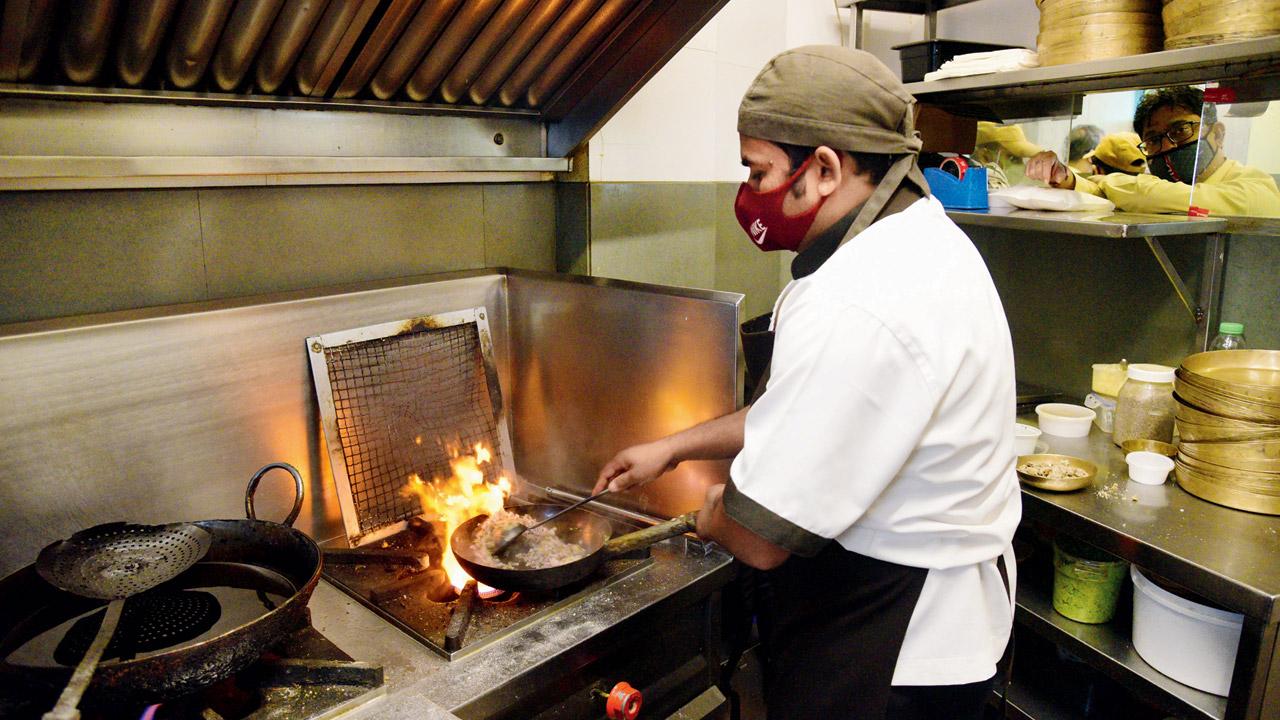
A chef at Soam prepares the lasan ma vagharelo rotlo. Pics/Pradeep Dhivar
No wastage is practised in almost every Indian kitchen and making best out of “waste” or “leftover” is a rather Gujarati trait, says Pinky Chandan-Dixit of Soam, Breach Candy. She gives us the example of vagharelo rotlo, which is tempered bajra or jowar rotlas. Some even make it using leftover rotis. “Rotlas are thicker than chapattis and they are inedible the next day as they become chewy. We crumble it into pieces and saute it generously with ghee, green garlic and onions. This tastes delicious in the winters; we prefer bajra rotla in the summers.”

According to her, Gujarati cuisine largely follows the use of seasonal ingredients and foods that aid digestion. In her mother’s home, they also use leftover rice to make pakodas. “We mix masala and besan in rice and fry them into crunchy bhajias. Another dish is the khakra papad. We make a crumble and give it a good toss with peanuts, jeera and curry leaves and mix it with some crushed papad. This has a chivda variant made using poha too.”
‘The ambade slowly soften and melt in your mouth the next day’
What: Ambadyachi kadi, Mangalorean
By Shireen Sequeira, chef and blogger
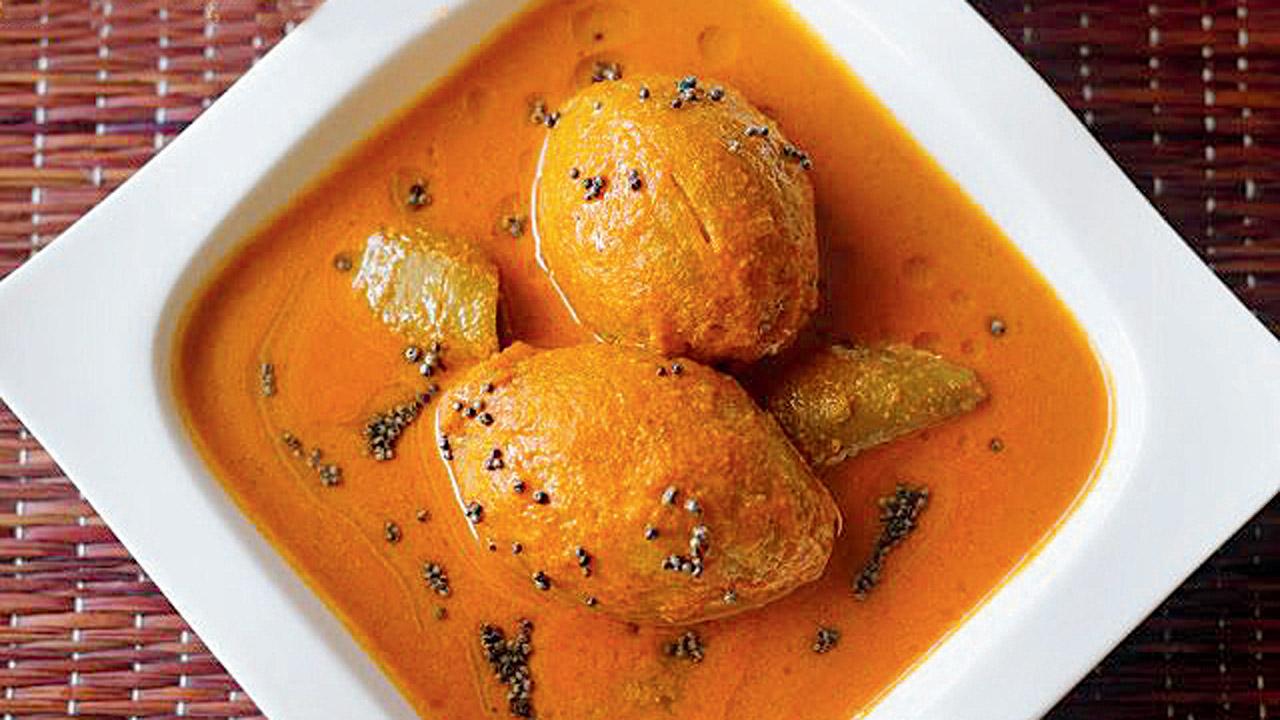
The dish is prepared when hog plums are in season, between July and September, which is also when Mangalore receives generous showers of rain
Shireen Sequeira, who has been documenting Catholic Mangalorean cuisine on her blog Ruchik Randhap—meaning delicious cooking in Konkani—for the last 13 years, says that most gravies from this coastal region taste even more delicious the next day. In fact, pork dishes such as bafat and kaleez ankiti (Mangalorean sorpotel), are on top of the list.
One of her favourites, though, is the ambadyachi kadi (hog plums curry). Hog plums are also known as Indian mombin, Spanish plums, wild mango and golden apples, but they are neither plums nor mangoes or apples, Sequeira informs. They actually belong to the cashew family. The Indian variety (spondias pinnata) is just one of the 17 species that are native to the Neotropics and tropical Asia.

Shireen Sequeira
“My mother used to make this curry especially around the Monthi festh [feast of the Nativity of Mother Mary that falls on September 8] as hog plums are available abundantly during this season,” she says, adding, “I remember being given the task of lightly bruising the hog plums with a mortar and pestle before being added to the curry.”
Usually, the dish is prepared when hog plums are in season, between July and September, which is also when Mangalore and the coast receive generous showers of rain. “In the earlier days, it used to be prepared at least two to three times during the whole season, as seafood was scarce during the monsoon because fishing boats did not venture out into the sea and women had to make do with seasonal or preserved vegetables to prepare meals.”
In Sequeira’s recipe, shared on her blog (www.ruchikrandhap.com), the hog plums are first cooked with water and salt, before powdered jaggery is added to it. This is then left overnight to allow the hog plums to absorb the flavours, before it is mixed with roasted, ground masalas to make a delicious gravy. “My version of the recipe is how it is traditionally made using basic spices such as long dried red chillies (bedgi variety), coriander, cumin and mustard seeds, peppercorns, peppercorn, garlic, onion and coconut. Another version uses black gram or urad dal and fenugreek seeds.”
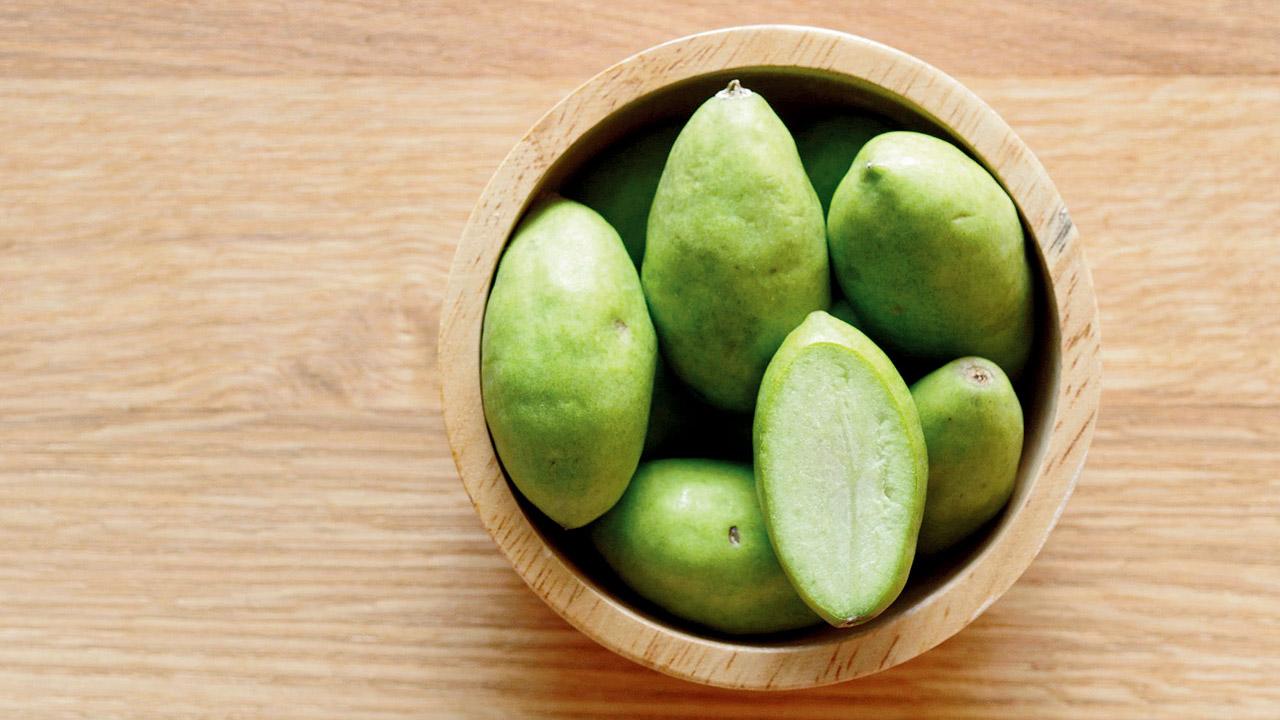
Hog plums
By the end of it, the curry develops a fine balance of sweet, sour, spicy and salty flavours. It is best enjoyed with kozo, Mangalore’s classic red unpolished boiled rice. “What gets leftover, tastes great the next day.”
It’s the hog plums or ambade that make the dish taste better with time. “The ambade are fleshy and firm on the first day, slowly soften and melt in your mouth the next as they absorb the flavours of the curry. We would relish the gravy by sucking the juice out of the fibres of the hog plums. The taste is simply tantalising as the traditional way of making it is by leaving it overnight in the earthen pot that it is cooked in and gently simmering it before being served again.”
‘Made to beat the biting cold’
What: Aloo bari, Lucknowi
By Chef Shadab Qureshi, Jyran, Sofitel
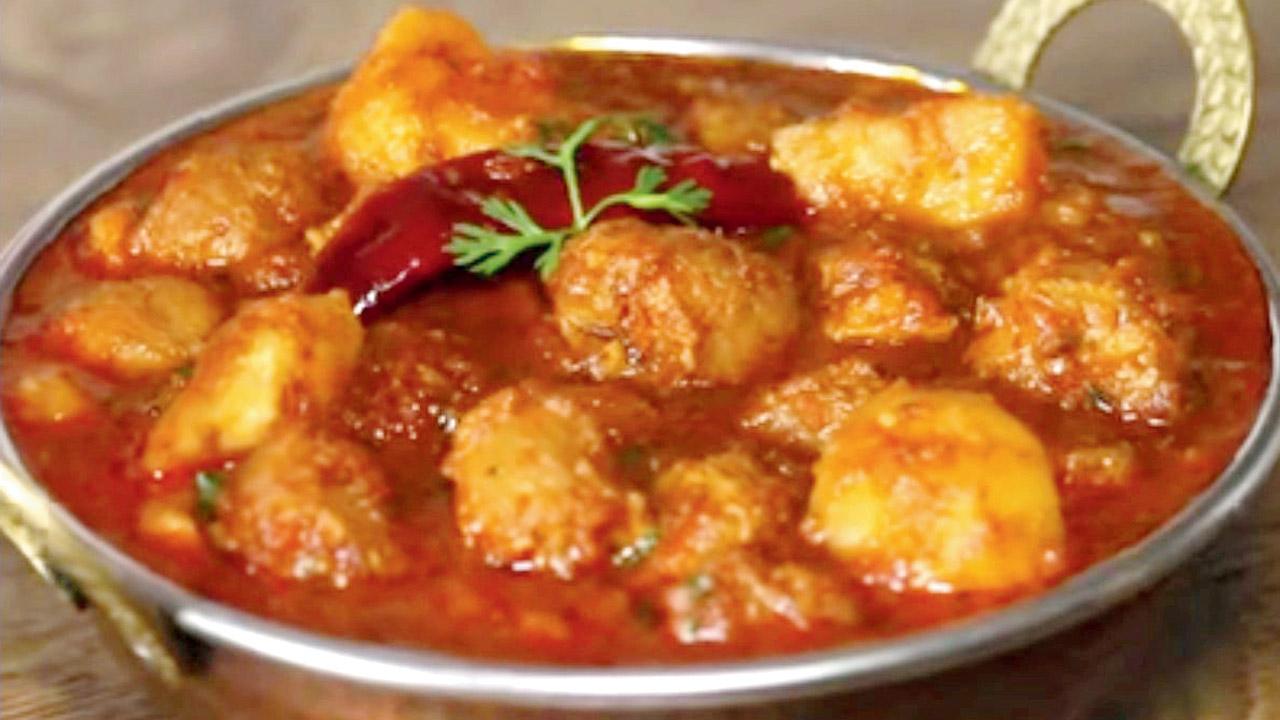
This popular dish from the kitchens of Lucknow is made with spiced lentil dal dumplings, often made at home, dried on the terrace and stored for year-round use. It is noted that similar baris are made in most parts of north India and each one has its own version of preparation. Chef Shadab Qureshi, Chef de Cuisine, Jyran, Sofitel in Mumbai, who hails from the city of Nawabs, says, “Mostly made during winters to beat the biting cold, the bari is made by mixing various lentils and new potatoes available this time of the year. Some prefer just plain urad dal ones. Frying it in ghee gives it a distinct taste. Often made for dinner, it is relished as the next day’s lunch because it tastes even better then. The flavours come together to provide a rich, wholesome taste.”
Ingredients
500 gm potatoes
250 gm bari (wadi split lentil nuggets)
1 large onion (finely chopped or grated)
150 gm fresh tomatoes,chopped
25 gm ginger, chopped
20 gm garlic, chopped
150 ml oil or ghee
1 tsp cumin seeds
5 gm asafoetida
1 tsp turmeric
2 tsp coriander powder
1 1/2 tsp red chilli powder
Salt to taste
Chopped coriander for garnish
Method
Peel and cut the potatoes into large squares. Fry the baris (if they are large, break them into smaller pieces), in oil for a minute or two. Keep aside. Heat little oil in a pan, add cumin seeds and asafoetida, when it splutters, add onions, ginger, and garlic until the onions are browned. Add all the spices and salt, fry for a minute; don’t let the spices burn. Add tomatoes and stir-fry on medium heat, until the oil separates. Add the potatoes and baris and let the masala coat well. Simmer until potatoes are tender. Turn off the heat and add coriander leaves. Serve hot, with paratha and rice.
‘Never overcook the fish’
What: Surmai haldoni, Konkani Muslim
By Mumtaz Kazi, home chef
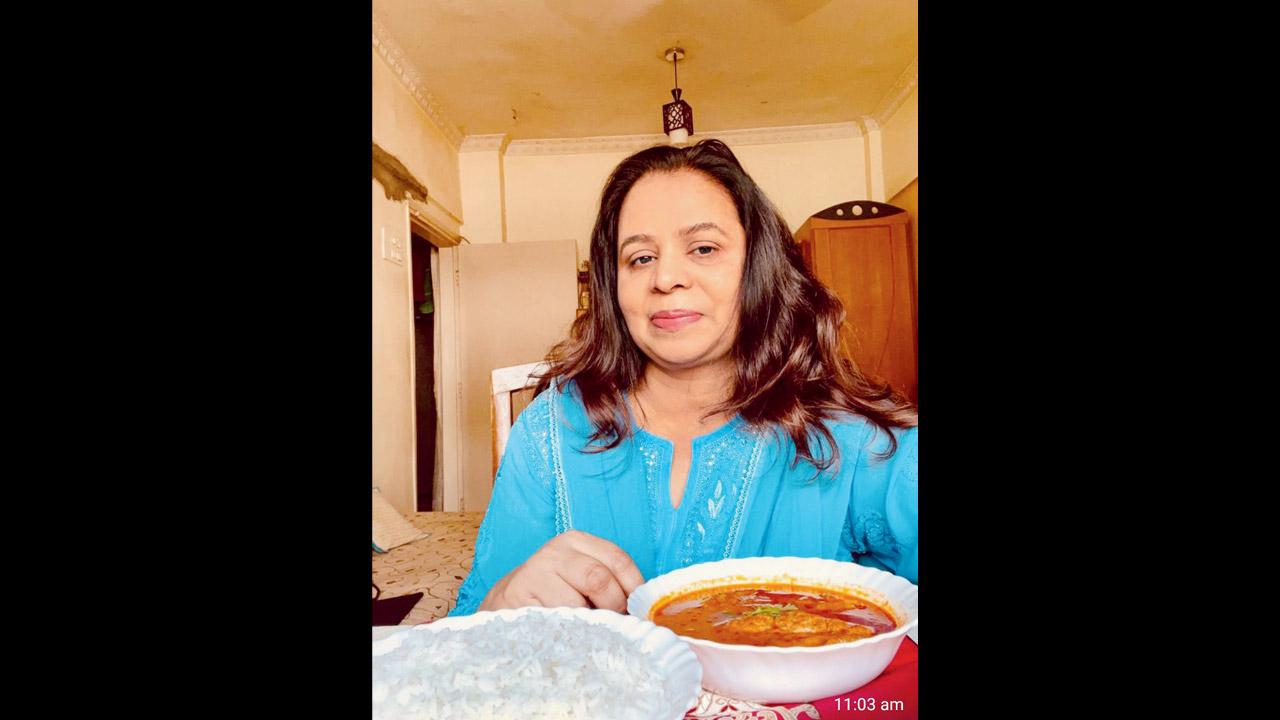
Home chef Mumtaz Kazi says the flesh of surmai is firm and hence, preferred
“There cannot be a better fish than surmai [seer fish] for haldoni, a spicy-tangy fish,” Andheri-based home chef Mumtaz Kazi tells us. “The flesh of surmai is firm and hence, it is preferred, but you can also choose other fish or prawns for the same. The next day, the haldoni absorbs the juices of the fish, which makes it tastier. Also, the consistency thickens, which lends it an intense tastes. Once we get fish from the market, we add a little salt to it and let it sit for 10-15 minutes and then, we wash it. This enhances the taste of fish and it doesn’t taste alni [saltless]. Also, every fish has a different cooking time according to the firmness of their meat. Never overcook the fish, as it will break.
Surmai haldoni
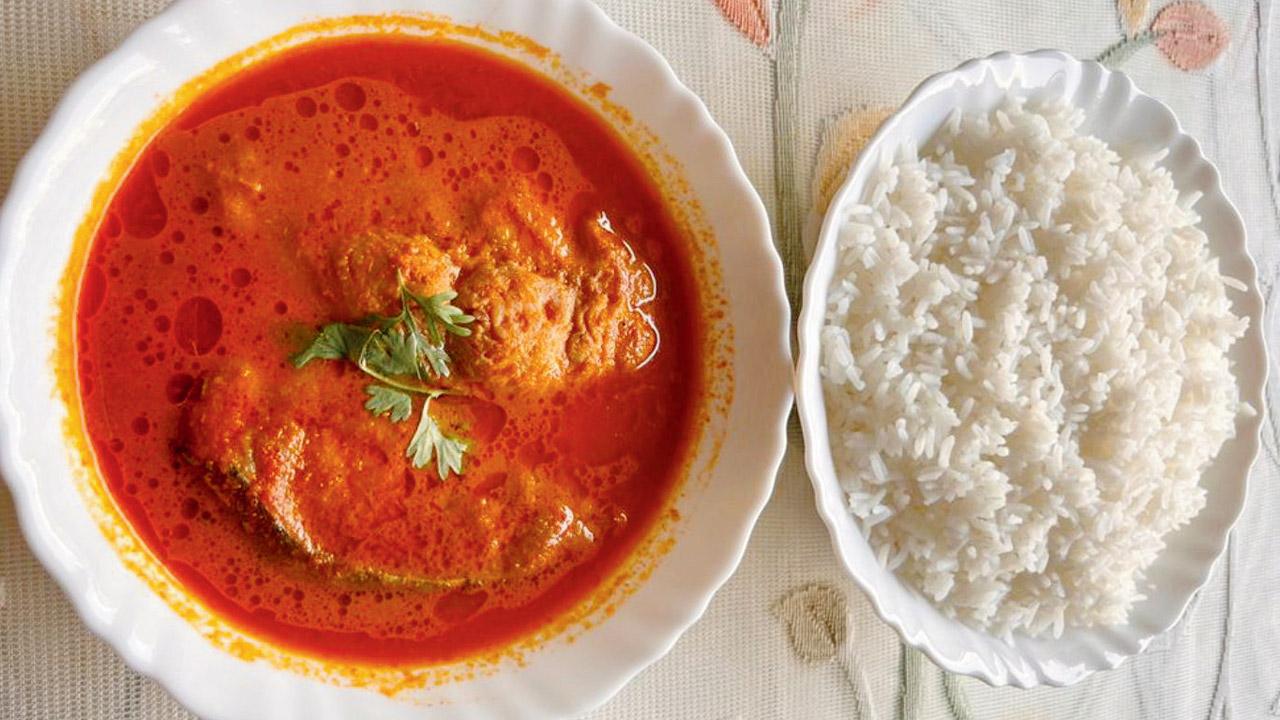
Ingredients
4 slices of surmai
4 tbs Kokani fish masala
4 to 5 cloves garlic
Small piece of fresh coconut
Few sprigs of fresh coriander
Grind the above masala into a fine paste and keep
Few sprigs of curry leaves
Milk of fresh coconut
2 pieces kokum
1 tsp fenugreek seeds
2 to 3 tbs oil
Method
Add oil to a kadai and heat then add curry leaves, few seeds of fenugreek. Once it starts sputtering, add above ground masala, fry for a few minutes, now add fish and cook for 2-3 minutes, until you see oil on the side. Now add two cups of water or as required, cook further for 15 to 20 minutes. Before removing from the flame, add coconut milk, bring to a boil and remove from the flame. Garnish with fresh coriander; tastes best with steamed rice.
‘The two snacks are the highlight of Thadri festival’
What: Besan koki and mitho lolo, Sindhi
By Renu Sachdev, home chef
Home chef Renu Sachdev, who runs Ulike food service in Ulhasnagar, has fond memories of tucking into mitho lolo, a sweet flatbread, and besan koki, a savoury floured cake, as a child. The two Sindhi delicacies are often prepared during Thadri, a community festival, which falls in the month of August, a day before Janamashtami. The word thadri essentially means ‘cold’ in the Sindhi language and is dedicated to Shitala Devi, the goddess who is believed to cure poxes, sores, ghouls, pustules and diseases.
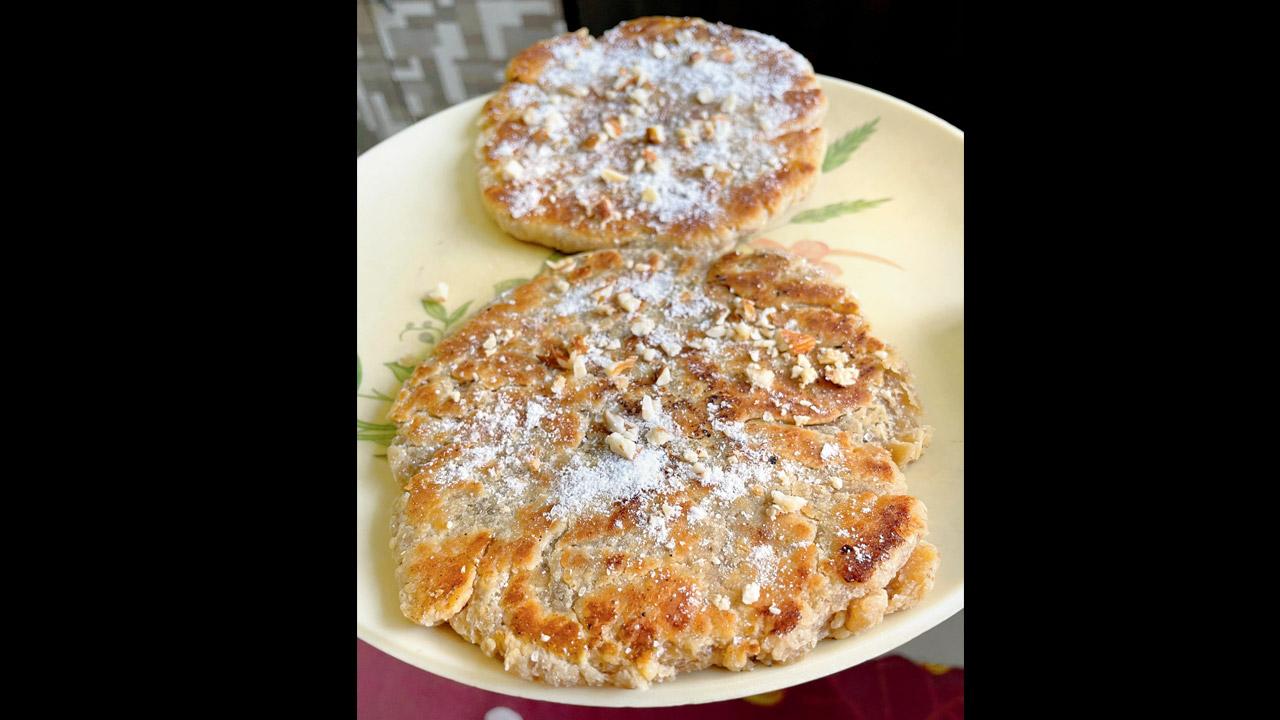
Mitho lolo
“The preparation of these meals begin a day in advance and the food is eaten the next day, because we do not cook on the day of the festival,” says Sachdev. While the masaledar koki is made using gram flour, whole wheat flour, salt, carom seeds, desi ghee, onion, green chilli, and coriander, mitho lolo contains whole wheat flour, sugar and jaggery syrup.
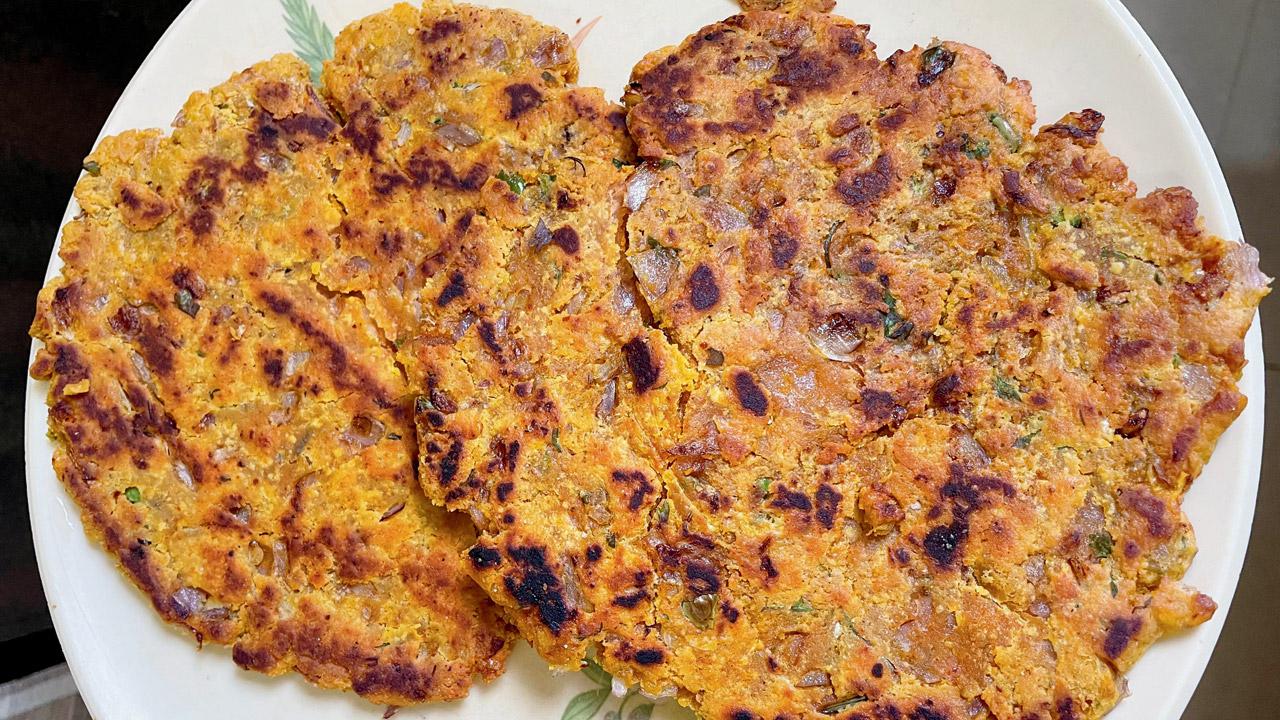
Besan koki
“Both these dishes are snacky items, and are the highlights of the meal. They taste progressively better.” While besan koki has a shelf life of three days, mitho lolo stays fresh for upto a week. She says time gives the flavours in the dishes a chance to meld, so the ingredients marry a little longer and continue to evolve, which elevates the taste.
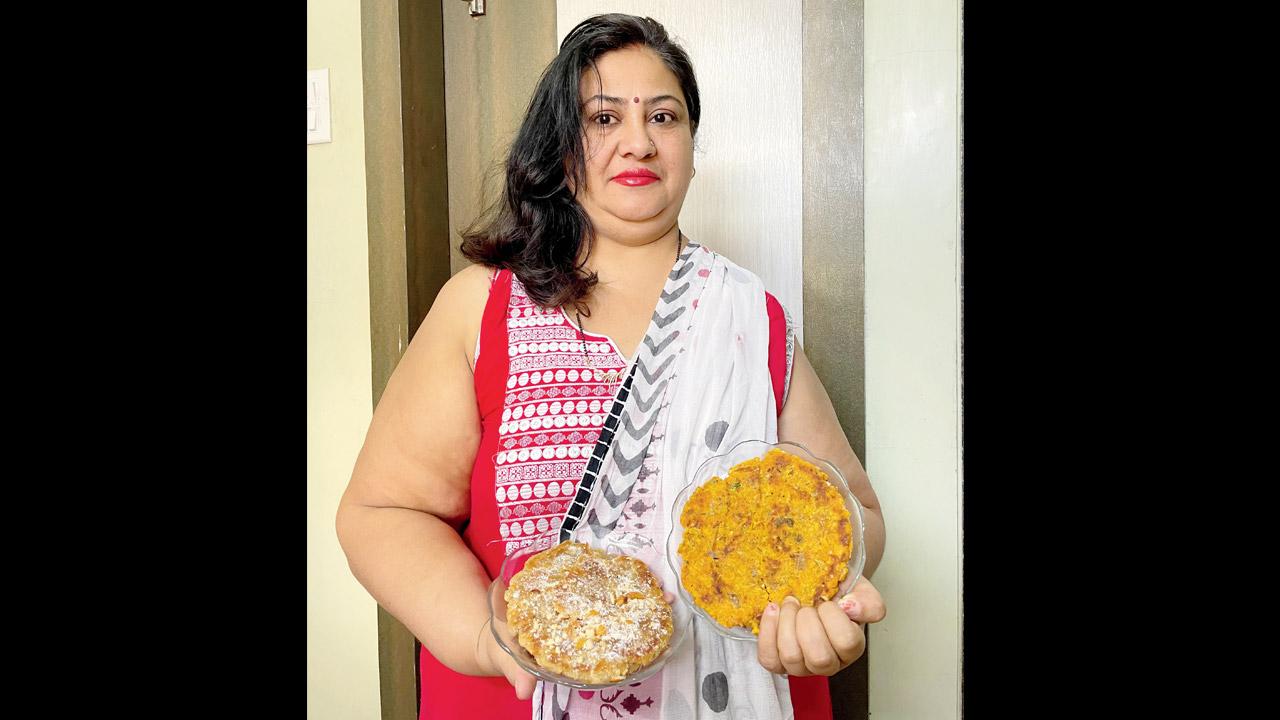
Home chef Renu Sachdev, who runs Ulike food service in Ulhasnagar, says longevity of both snacks makes them ideal for long hauls
Its longevity also makes it an ideal snack for long hauls. “People prepare it when they want to go long road trips. They are the way to go when needing a little pick me up or a healthy, filling lunch on-the-go.”
 Subscribe today by clicking the link and stay updated with the latest news!" Click here!
Subscribe today by clicking the link and stay updated with the latest news!" Click here!







